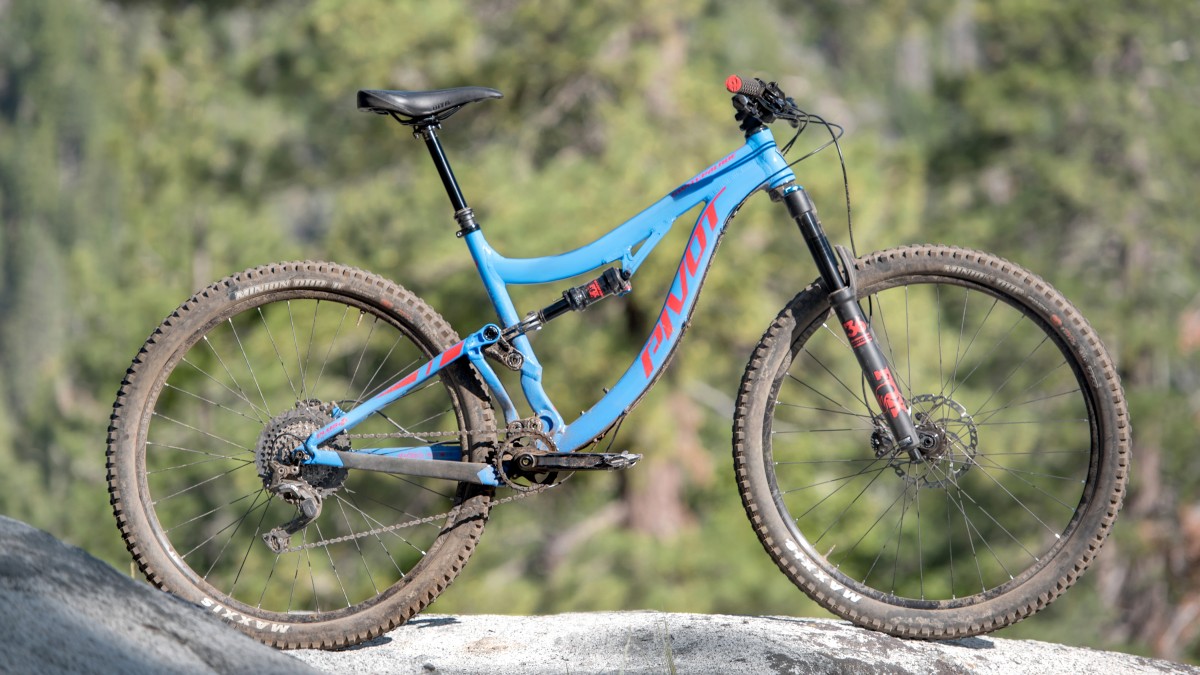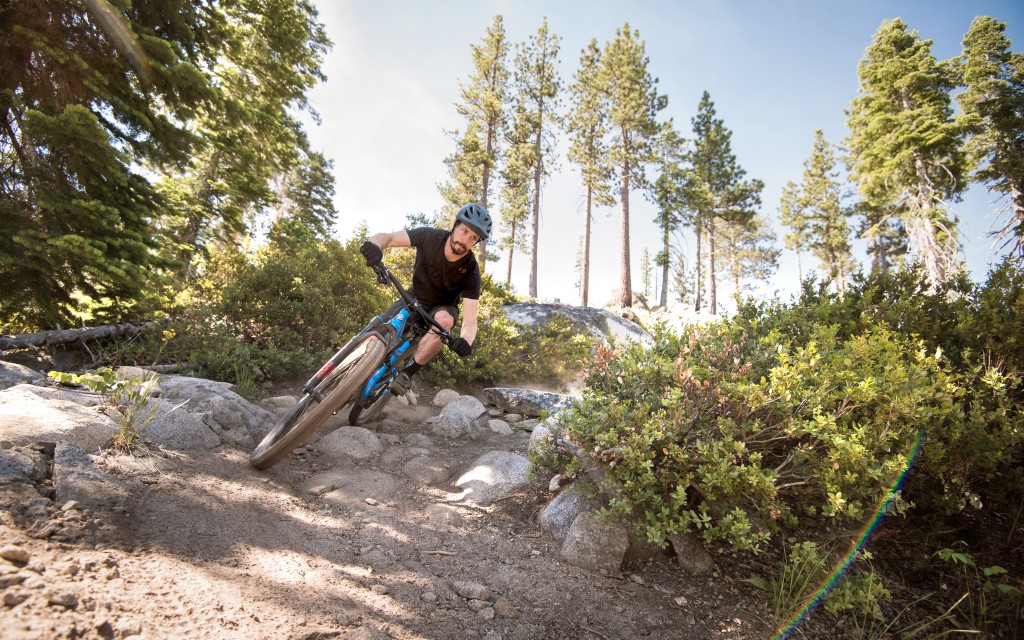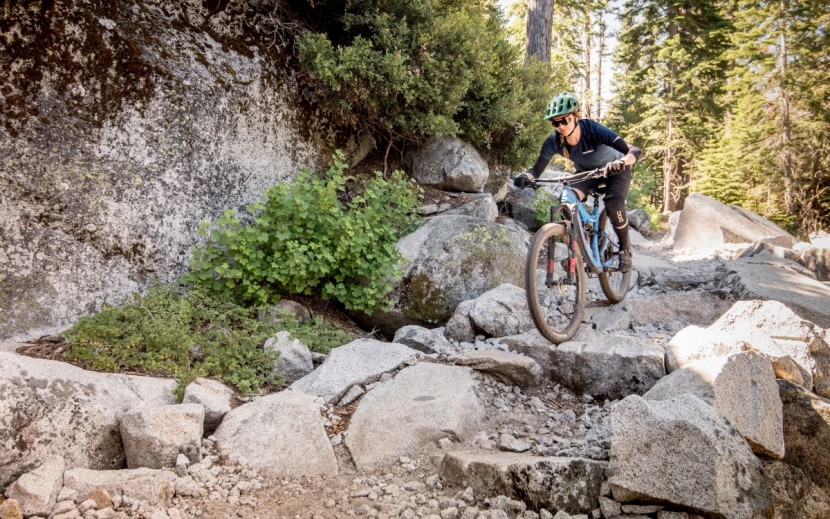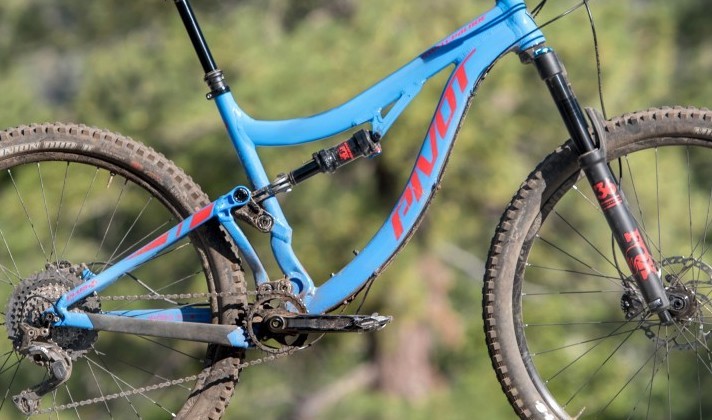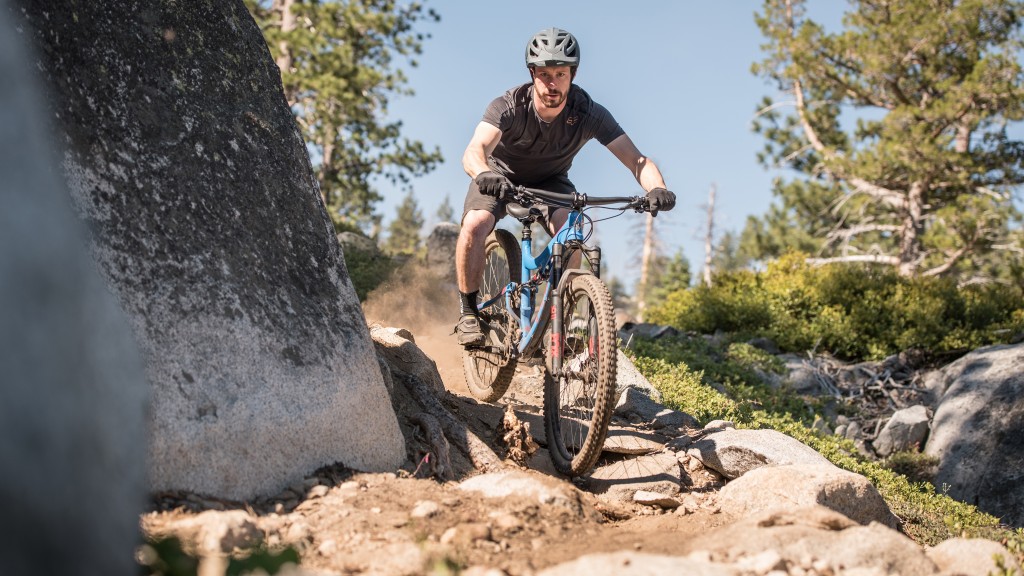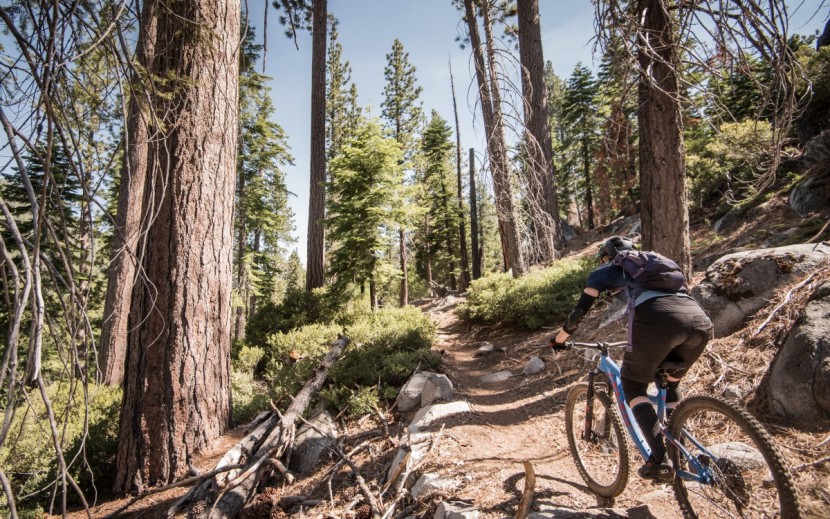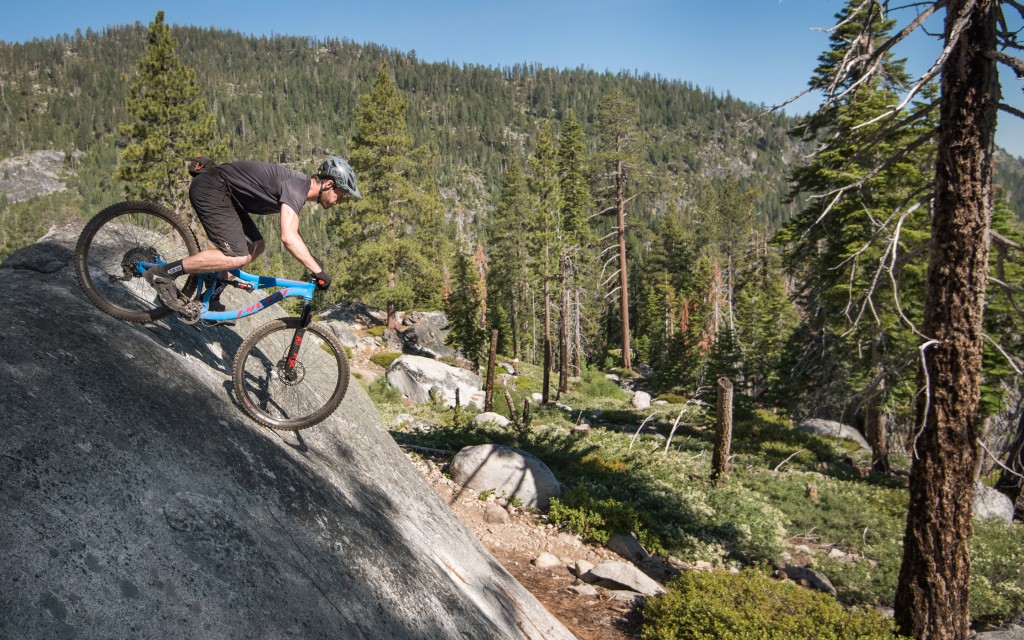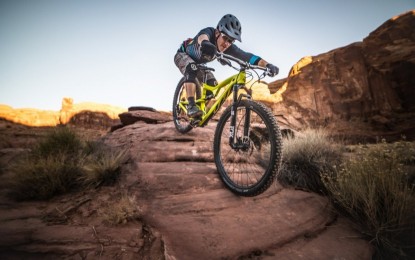Pivot Switchblade Aluminum Race XT Review
Our Verdict
Our Analysis and Test Results
The Switchblade was recently redesigned for the 2020 model year. The version reviewed here is still readily available and at discounted prices. The frame now only offered in carbon, has straighter lines, and it sees a bump in travel to 142mm with a 160mm fork. The geometry has also been tweaked, making it longer and slacker, and bringing it into the modern era. We will hopefully be reviewing the 2020 Switchblade in the near future.
Should I Buy This Bike?
The Switchblade should be on your shortlist if you're seeking high-end bike at an attractive price. Despite its weight and a few mediocre components, this bike has a well-designed frame that delivers on the trail. Performance is very impressive and the quick and responsive handling makes for a very, very, fun ride. Yes, there are less expensive bikes that offer impressive performance, but the Switchblade is a stellar offering from a manufacturer typically associated with much higher price tags.
The Santa Cruz Hightower is another intriguing choice. The Hightower has 140mm of rear-wheel travel but feels slightly more capable on bigger terrain. The Santa Cruz is longer and slacker which lends itself to better high-speed stability. The Hightower can't match the quick and nimble feel of the Switchblade, but it feels more comfortable on rowdy terrain. Climbing abilities are comparable. It should be noted that the Santa Cruz offers a much more airy and spacious cockpit. Complete builds range in price from $2,899 up to $10,499.
If all of this still seems a little too expensive, the YT Jeffsy Base 29 offers an unrivaled value at $2299. This 150mm shredder rolls on 29-inch wheels and has a very nice component specification for the price. On-trail performance is almost as impressive as the price tag. The Jeffsy is a well-rounded bike that boasts reliable climbing and aggressive descending skills.
Frame Design
The Switchblade has 135mm of DW-Link travel. This dual-link system features one link slightly above the bottom bracket and another approximately halfway up the seat tube. As the bike moves into its travel, both links rotate in the same direction. This system offers excellent climbing efficiency and isn't heavily affected by braking forces. One of the drawbacks is mediocre small bump compliance. This frame uses Super Boost rear spacing. Super Boost uses a 157mm rear spacing compared to 148mm with normal Boost. This causes problems for interested buyers who want to slap their trusty wheels onto this bike, they won't fit.
Our large Switchblade Aluminum XT 1X has a measured 66.7-degree head tube angle and 74.5-degree head tube angle.
The effective top tube measures 633 mm and the reach is 457 mm. The chainstays are 430 mm and the wheelbase measures 1191 mm. The bottom bracket height is 346 mm.
The Switchblade hit the scales at a lofty 32 lbs 15 oz set up tubeless without pedals This is significantly heavier than all of the aluminum trail bikes we have tested this year. It is also heavier than a few aluminum enduro bikes we tested such as the 2017 Commencal Meta AM and the 2017 YT Capra. We measured the Switchblade to be only 3-ounces lighter than the super-burly, 170mm, 2018 Santa Cruz Nomad Aluminum R. Here at OutdoorGearLab, we typically don't dwell on weight, but it is noticable and worth mentioning on the Switchblade.
Design Highlights
- Compatible with 29-inch (tested) or 27.5+ wheels
- 135mm of DW-Link of suspension
- Designed around a 150mm fork
- Super Boost 157mm rear spacing
- Press Fit bottom bracket
- Aluminum build kits ranging from $4099 (tested) to $6199
- Carbon build kits ranging from $5099 to $9399
Downhill Performance
The Switchblade is a stellar descender that relies on its precise and surgical attitude. This bike is very capable within its travel class but is somewhat limited on burly terrain. The geometry, combined with the stiff frame and aggressive tires, create razor-sharp handling that can't be overstated. The component grouping is largely impressive on the descent.
The Switchblade is in impressive descender. This bike cuts its way down the hill with impressive precision. The 66.7-degree head tube angle creates crisp steering at any speed. The quick and direct handling is backed up by a meaty 2.5-inch Maxxis Minion DHF front tire. One thing that was apparent to all of the testers was how stiff the frame was. Aluminum frames are often said to lack the stiffness of their carbon fiber counterparts. That said, the front triangle is fused approximately 8-inches behind the head tube moving rearward between the top tube and down tube. This fused front triangle paired with very short and stout 430mm chainstays creates a very stiff and responsive frame. As a result, no energy is lost into the frame when yanking on the bars or snapping out of a turn.
With 135mm of rear wheel travel and steep head tube angle, the Switchblade is most comfortable relying on its quick handling. This bike can be pushed beyond its limit carrying speed through truly choppy and steep sections of trail. Things can get out of control quickly when you rattle its confidence. As is the case with most mid-travel bikes, the Pivot can't simply be pointed down the gnar. Small to medium size hits are handled with composure, but rapid-fire bigger lines can be problematic. It's better to utilize the Switchblade's sharp handling to strategically slice and dice down the hill. It should be noted that some gravity-minded riders build up the Switchblade with a 160mm fork and an aggressive shock such as the Fox Float X2. We can't comment on how this bike rides with this burly setup, but it is very intriguing.
The Switchblade's quick-witted attitude lends itself to a very playful feel. Raising the front wheel to manual or wheelie through a dip in the trail is easy thanks to the ultra-short rear end. Popping over logs or holes is super easy due to the manageable wheelbase and responsive frame. Ripping jump lines and slashing berms is more fun than a barrel of monkeys. It was difficult to discern any obvious positive effect of the Super Boost spacing on the suspension feel. But if this new spacing allows Pivot to create such a short, playful, and stiff rear-end, we like it.
The components on our Switchblade XT 1X were reliable, if not flashy, on the descent. The Fox 36 fork with the GRIP Damper worked well enough. It can be tricky to find a suitable air pressure that balances bottom out support and small bump compliance. That said, the chassis on the Fox 36 is burly and isn't easily deflected. The 750mm Pivot branded handlebars are too narrow. While the common 800mm handlebar width is a bit excessive, 750mm is too narrow and detracts from downhill confidence. The Shimano SLX brakes offer reliable performance. The proven combination of Maxxis Minion DHF 2.5-inch and Maxxis Minion DHR II 2.4 works well, plain and simple.
Climbing Performance
The Switchblade is a stellar climber that provides a firm pedal platform while retaining decent traction. The suspension functions well but has a minor quirk or two. There is no denying that this bike is a bit portly, but the weight isn't a crippling flaw. The short chainstays can cause some problems when navigating tricky climbs. The component grouping functions well on the climb.
The Pivot puts riders in an efficient and comfortable climbing position. The rider is more or less on top of the bottom bracket and power is transmitted effectively. Our 6'1" tester found the top tube to very, very, cramped. Pivot's sizing chart says the large frame is recommended for riders from 5'11"-6'3". If you are 6'1" and over, we would highly recommend the extra large frame. The 346mm bottom bracket height is lofty enough to keep pedaling through crank-grabbing zones.
The DW-Link suspension remains firm under seated or standing pedaling loads. There is minimal pedal-bob. The Switchblade does benefit from the use of the shock's climb switch, but it is largely unnecessary save for those buff climbs or fire road grinds. The suspension is active enough to maintain traction through loose or bony sections of trail, yet firm enough to maximize energy.
The short chainstays on the Switchblade help retain a manageable wheelbase, stiff feel, and impressive handling. This is beneficial when changing lines and cutting a tight corner uphill. The short chainstays can make it difficult to control the front end when punching up steeper sections of trail. If you give the Pivot a short burst of power, the short rear end makes the bike go into wheelie-mode in a hurry. This can cause you to loop out very quickly. After few tough climbs, most testers learned to anticipate when the front wheel will decide to wander and act accordingly.
The Shimano XT/SLX drivetrain offers a cozy 30-46t climbing gear. Testers could find a relaxed cadence for those long, suffering, slogs. The Sun Ringle Duroc rims have a 27mm inner diameter and provide a reasonable footprint for the 2.4-2.5-inch tires. A wider rim would only improve traction.
Photo Tour
Value
Pivot is viewed as a premium brand. The $5000+ price tags for their entry-level carbon fiber bikes reinforces the company's high-end image. The Switchblade Aluminum XT 1x is a more affordable and attainable bike that offers a stellar ride. Even if this bicycle is heavy and some components are only mediocre, it shreds. It shreds hard. It is easy to call the Switchblade a solid value.
Conclusion
The Switchblade Aluminum XT offers striking on-trail performance at a reasonable price. Handling is quite impressive and the Switchblade operates with razor-sharp precision. Climbing skills are respectable and, despite its nearly 33-lbs of mass, this bike ascends effectively. Riders seeking a lively bike that can handle a wide range of terrain will love the Switchblade.


